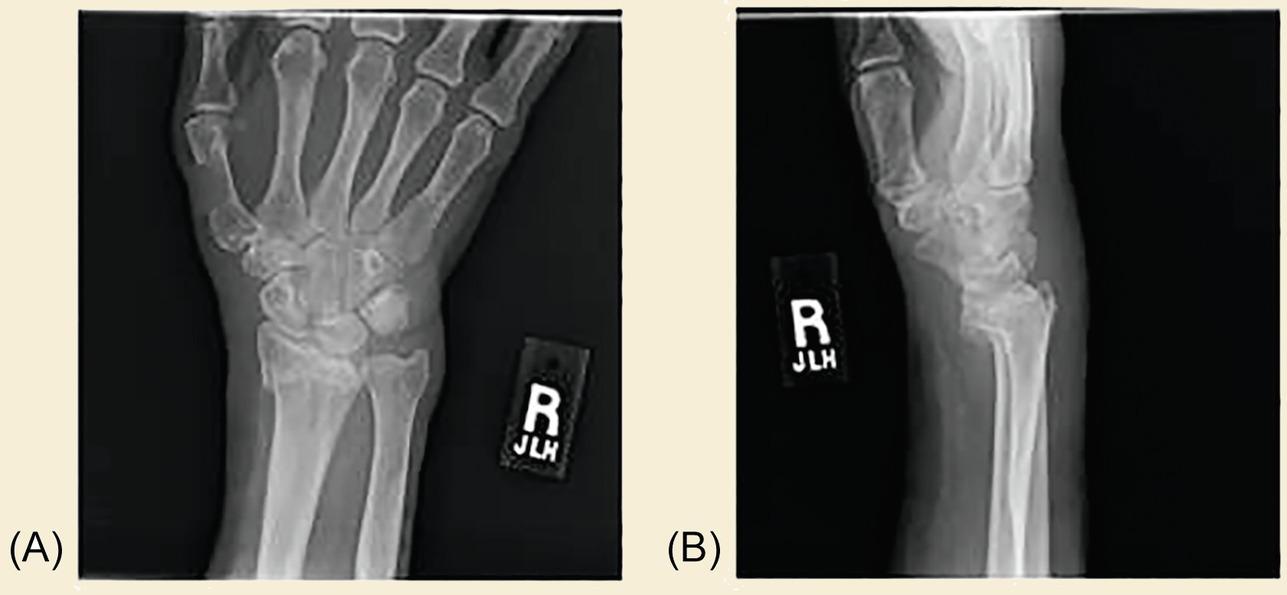Physical Address
304 North Cardinal St.
Dorchester Center, MA 02124
While the cause of nonunion is often multifactorial, both injury (open fracture, severe comminution, soft tissue interposition) and patient (diabetes, smoking, obesity, substance abuse, malnutrition, peripheral vascular disease, social situation) factors play a role.
Treatment is based on the history of previous surgical attempts, the status of the radiocarpal joint, and the status of the distal radioulnar joint.
Commonly utilized methods include orthogonal plating, nonvascularized bone grafting, vascularized bone grafting, modified Sauve-Kapandji procedure, and radiocarpal arthrodesis.
A 67 year-old, right-handed female with a history of poorly controlled type II diabetes and cerebral palsy with associated spasticity presented to an outside hospital following a ground level fall with a closed distal radius fracture ( Fig. 1 A and B). Closed reduction and casting was attempted, however she was referred to our clinic approximately 3 months status post injury with concern for nonunion with associated loss of reduction, shortening, radial deviation, and volar subluxation ( Fig. 1 C and D). What is the most effective approach for management of this clinical scenario?

Distal radius fractures are a commonly encountered injury in orthopedic surgery, representing the most common upper extremity fracture encountered in the emergency department and accounting for approximately 20% of all fractures occurring in adults. Common complications include median nerve neuropathy, extensor pollicis longus tendon rupture, flexor pollicis longus tendon rupture, radiocarpal arthrosis, infection, and malunion. A less commonly observed complication of distal radius fractures is nonunion of the fracture site, estimated to occur in 0.03%–1.6% of cases ( Fig. 2 ).

Though rare, nonunions can be a devastating complication, resulting in severe pain and functional limitation. Additionally, even those that are able to be successfully treated often require multiple operative interventions, resulting in increased health care costs, time away from work, and risk of infection or other complications.
What is the most effective management of a distal radius fracture nonunion?
Become a Clinical Tree membership for Full access and enjoy Unlimited articles
If you are a member. Log in here